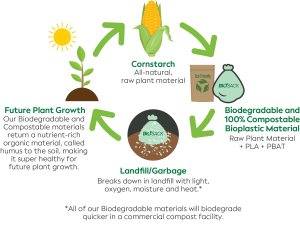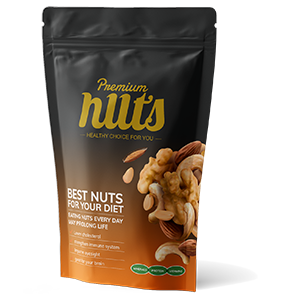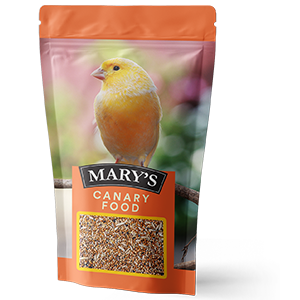Managing Packaging Product Delays
What’s the difference between biodegradable vs compostable packaging? Discover which sustainable material is best suited to your product.
For all of us, both personally and professionally, 2020 has been a year like no other we have experienced – from devastating fires and floods to a global pandemic. While challenging, the year has also seen some business triumphs. For instance, it has provided us with some great insight into the day to day operations and decision-making processes of food and pet food industries, including current trends in food packaging.
As a provider of flexible packaging solutions, we are in a unique and fortunate position to observe and experience the changes in packaging buying behaviour each year.
Our top 5 trends in food packaging seek to inform and empower you with information, so that you can navigate these unprecedented times and look towards the future with confidence.

At the top of our list is environmentally friendly or sustainable packaging. 2020 brought an increased level of interest by manufacturers for sustainable packaging. Around the world, both brands and consumers are making social and environmentally responsible purchase decisions.
While this trend is not new and will inevitably continue to be top of mind, demand for eco-friendly packaging solutions has been gaining momentum for a while now. Not just because of the Australian Packaging Covenant 2025 Packaging Targets but also the growing demand and shift in consumer buying behaviour.
A recent study into Sustainable Packaging, Sustainable Packaging Market – Global Industry Analysis, Size, Share, Growth, Trends and Forecast 2018 – 2026, conducted by Transparency market research has revealed that millennial consumers (those born between 1981 and 1996) are more informed than ever about their carbon footprint. These buyers are taking “corrective and impactful measures” towards choosing brands that have the least amount of “impact on the environment and the earth in general”.
It’s no surprise then that manufacturers like Natures Organics with their “Back to Nature” packaging and Unilever with a “Less Plastic, Better Plastic, No Plastic” approach to packaging (as well as their EcoActive product packaging range) are leading the way in sustainable solutions. Even MacDonald’s has responded to the market. In January 2018, they announced that by 2025, all of their packaging will come from renewable, recycled or certified sources and waste within the MacDonald’s restaurants will be recycled.
Yet despite all of this, the coronavirus pandemic has seen an increase in the consumption of single-use and disposable products across the globe in an effort to improve hygiene and maintain good health.
As manufacturers and packaging providers, it is essential that we continue our investment in sustainable packaging and look for opportunities to innovate our packaging design to encourage consumers to continue to make the right choices for both their health and the environment.
Some options we recommend to help your business go greener are:
Polylactic acid (PLA), a plastic substitute made from fermented plant starch like corn, is accessible now and can replace your traditional petroleum-based plastics.

The Australian Government has committed to having 70% of all plastic packaging to be recyclable by 2025 (https://apco.org.au/ ). There are small steps you can take now to help achieve this:
You can make a positive difference, simply by offering product packaging that encourages repeat use by consumers. Not only does this benefit you with repeat purchases of your brand, but it also models the sustainable buying behaviour of consumers.
Can your product packaging move to a reusable container like a refill Pouch option? Should you consider a larger weight volume per item?
Half the battle in improving recycling is educating consumers on what and how packaging can be recycled. Ensure you have the correct, most up to date and clearly displayed Australian Recycling Label for what, where and how your packaging components should be disposed of.
It is possible to have a positive impact on the environment, without compromising on your product integrity and brand, so don’t miss the boat on this trend and make the switch.
Need some help identifying and making the switch to sustainable packaging? Contact us now and we can do a “Sustainable Packaging Health check-up” for you.
Even before the pandemic, consumers were demanding convenience when it came to packaging. That means convenience to purchase a product (accessibility), use a product (usability) and dispose of the product.
This has challenged the manufacturing and packaging industry to look for new, innovative and modern food packaging design solutions that meet market demands. The most significant trend we have seen this year is the increase in demand for Stand Up Pouches, a more cost-effective alternative to the traditional use of glass jars and metal containers.
Pouches are available in eco-friendly materials, maintain the integrity of the product and can also be cheaper to package, store and display on the shelf!
Need some food packaging design inspiration? Check out our Flexible Packaging Pouch range.


Demand for Short Run print and packaging has been on the rise.
Short Runs allow manufacturers new, big and small to be agile and responsive to the changing market and consumer buying behaviour.
With no significant financial investment required to establish plates and cylinders for larger print and packaging jobs, Short Runs provide new and existing businesses with the flexibility needed to:
Not all packaging providers offer Short Runs as a service, so do your research to find a quality provider that is preferably Australian-owned and, for consistency, can meet both your short-term and long-term growth plans.
Learn more about Short Runs.
This year has seen manufacturers rely more heavily on their flexible packaging providers to be an expert in their field and to deliver on time and in full. They want a provider that they can rely on during the tough and changeable times. A partner they can trust. Someone who will proactively engage, recommend and educate them on how they can innovate through their packaging design, to get noticed on the shelf, whilst also being mindful of the Sustainable Packaging Guidelines (SPGs).
Here are a couple of things to consider when choosing a flexible packaging provider this year:
Manufacturers are looking for a flexible packaging provider that can guarantee a packaging solution that will maintain product integrity, longevity and quality but get noticed on the shelf!
Looking for an experienced Flexible Packaging provider, check us out here.
For the Food Industry, the increase in demand for products experienced during the height of the pandemic, both here and around the world, exceeded the Christmas peak period. The un-forecasted demand put a significant amount of pressure on the food manufacturing supply chain and identified a number of potential gaps.
Associate Professor William Ho, from the University of Melbourne believes that “panic-buying provides us with a prime example of something called a ‘demand risk’ to supply chains – or a sudden surge in demand that catches manufacturers and retailers by surprise”.
The challenge facing most manufacturers now has been the difficult act of mitigating against this ‘demand risk’, with their desire to maintain shorter production cycles for financial, warehousing inventory and labour cost containment.
While not a new industry concept, stock on-demand or the ability for manufacturers to scale up quickly when and if required, requires forward planning, confidence in their supplier (and their supplier’s suppliers) and warehousing storage space.
Manufacturers order a minimum amount of stock, generally a couple of months’ worth, pay for it in instalments and have it stored locally with their supplier. Orders are placed as required, on-demand; and delivered within 48 hours.
This has allowed manufacturers to;
Need a national flexible packaging supplier that can help you manage your ‘Demand Risk’? Check us out.
2020 has been challenging. We hope our top 5 trends in food packaging have empowered you with the knowledge required to make sound decisions, look to the future and grow your business.
If you would like more information or wish to chat with an experienced packaging industry supplier about your options, visit food packaging or contact our team today.
As they say, we are all in this together and we are here to help!
What’s the difference between biodegradable vs compostable packaging? Discover which sustainable material is best suited to your product.
What’s the difference between biodegradable vs compostable packaging? Discover which sustainable material is best suited to your product.
What’s the difference between biodegradable vs compostable packaging? Discover which sustainable material is best suited to your product.
Need some packaging design inspiration for your products? Discover the current top 5 current trends in food packaging.
There is a mis conception when it comes to consumers making the right choices when it comes to recyclable packaging products
In our experience, fresh foods when packaged with the right material structure, improves food presentation,
